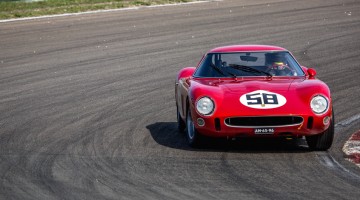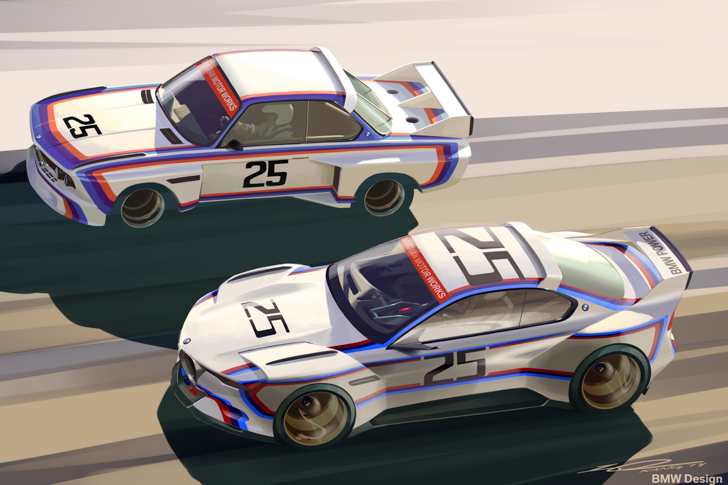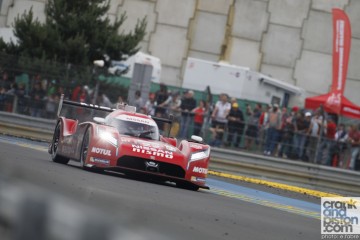Tim Brown checks out some iconic classic machines on the hillclimb at London’s Crystal Palace Park
[Not a valid template]It could be argued that sprint racing is the most accessible form of competitive motorsport. Part of the appeal is the sheer variety of cars, everything from wheezy road legal hatchbacks to single seater racecars to the brutal purpose-built monsters nailing hillclimbs.
And yet I’ve never actually been to a sprint event.
So when I heard about a local event that’s been gaining traction over the past five years – ‘Motorsport at the Palace’ – I decided to take a look. Hosted in south London’s Crystal Palace Park, the grass roots event attracts an impressive crowd. Unsurprisingly, a range of machinery spanning more than seven decades caught my eye…
[Not a valid template]1958 Elva MkIII
One of the cars I was completely unfamiliar with was this charismatic Elva MkIII. Although it could hardly be described as pretty, the bare-metal body (displaying it’s hand-beaten patina) and purposeful proportions certainly stand out. It’s also quite quick: despite having only a 1400cc engine and skinny historic Dunlop tyres, it took the class win in the hands of driver Alan Faggetter. This particular machine also had an interesting backstory: once owned by Carroll Shelby’s chief mechanic, it was raced in the USA before being repatriated to the UK by its current owner.
[Not a valid template]1994 Renault Alpine A610
Alpine A610s are a fairly rare sight on UK roads, and it’s rarer still to see one competing. This example looks fantastic, riding low on rims that looked similar to OZ Rally wheels, but which I later realised were the standard A610 wheels minus the centre-caps. The other cool exterior feature was the rear-mounted intercooler beneath the spoiler. But the real magic was happening inside the car; the only parts recognisable as original being the upper dashboard and steering wheel. It was worth a look just to see the beautiful exposed gear linkage.
[Not a valid template]2014 Mygale M12
Possibly the most exciting car/driver combo of the day was Andy Laurence in the Mygale M12, the most recent (but sadly now defunct) incarnation of the Formula Ford. Using Ford’s 1.6 litre Ecoboost engine in a space-frame and carbon monocoque, with 6-speed sequential ‘box and functioning aero, the 455kg racer is well suited to sprints. Which is fortunate, since Andy only collected the car a couple of weeks before the event, and had very limited time to test; “I haven’t changed anything at all on the setup, we’re running it as it came out of the box”. That doesn’t mean the car will stay like that though; “at the moment it produces about 220-250kg of downforce, we’re planning to fit an F3 rear wing which should just bolt straight onto the gearbox mount and give us 600kg or so. Also the engine can be remapped quite easily to around 220bhp”. Even in it’s standard form it’s quick though, and was pipped to the fastest overall time by just seven-hundredths of a second.
[Not a valid template]1988 Rover Mini
One of the ‘biggest’ crowd favourites of the weekend was this Mini. If it looks a little out of place at a hillclimb, that’s because it is – Russell Crampton usually campaigns this tiny racer in rallycross rather than sprints, but took up the invitation to join in just for fun. Fitted with an 1800cc K-series engine and body mainly replaced with fibre-glass panels, the wide-bodied Mini scrabbled through the course, munching tyres at an alarming rate (much to Russell’s dismay).
[Not a valid template]1969 Alfa Romeo 1750 GTV
Usually when a car stands out in a packed paddock, that’s because it’s extreme – chopped up bodywork, bulges and aero devices, eye-catching liveries….but in amongst the purpose built racers and heavily modified road cars, this Alfa Romeo stood out for being so refined and elegant. In fact, the only obvious hints that it was a competition car were the race-number roundels and the beam-breaker screwed on to the front (nothing so vulgar as gaffer tape here!). A closer look reveals sticky Advan tyres, a roll cage, bucket seats and harnesses (colour matched to the driver’s nomex suit and gloves, naturally), but unlike most of the other cars, this one hasn’t suffered the indignity of being stripped for maximum weight saving. The interior feels sporty yet plush; the wood, aluminium brightwork and quilted leather trim remain – the best way to describe it is a ‘gentleman’s racer’. The gentleman in question, Christian Brewer, explains why: “After buying the car a few years ago, I had intended to use it as a track car. But when I saw how beautiful the paintwork was after it’s restoration, I decided it was too good to track, so now I just use it for the occasional sprint”.
[Not a valid template]1979 Ferrari 308 GT4
In amongst the plethora of cars I didn’t expect to see was this Ferrari 308 GT4. This mid-engined 2+2 might be seen as a left-field choice for sprinting, just as the blue and cream paintwork deviates from the obvious choice. Not only did it look good though, but seemed at home blasting through the course.
[Not a valid template]1980 Pilbeam MP43-BMW
The top time of the day went to David Seaton in his Pilbeam MP43. This car was designed specifically for hillclimbs by Pilbeam, a company founded by a man whose résumé includes designing Formula 1 cars in the ‘60s and ‘70s for BRM and LEC, as well as his own LMP2 car for Le Mans and a number of touring cars for various ‘works’ teams. David has fitted his MP43 with the V8 engine from a BMW E39 M5; “I did consider the V10 BMW engine, but it wouldn’t fit without extending the wheelbase. And if Mike Pilbeam chose that wheelbase, who am I to change it!”. The V8, on the other hand, was a good fit and has been tuned to 480bhp. Bearing in mind the MP43 tips the scales at just 550kg, it’s hardly surprising that David topped the timing sheets, smashing the course record by over a second in the process.



